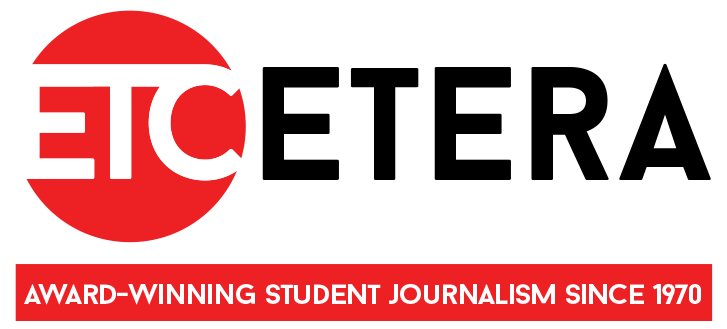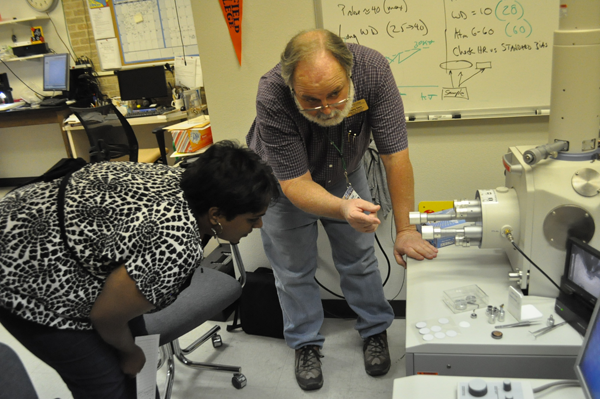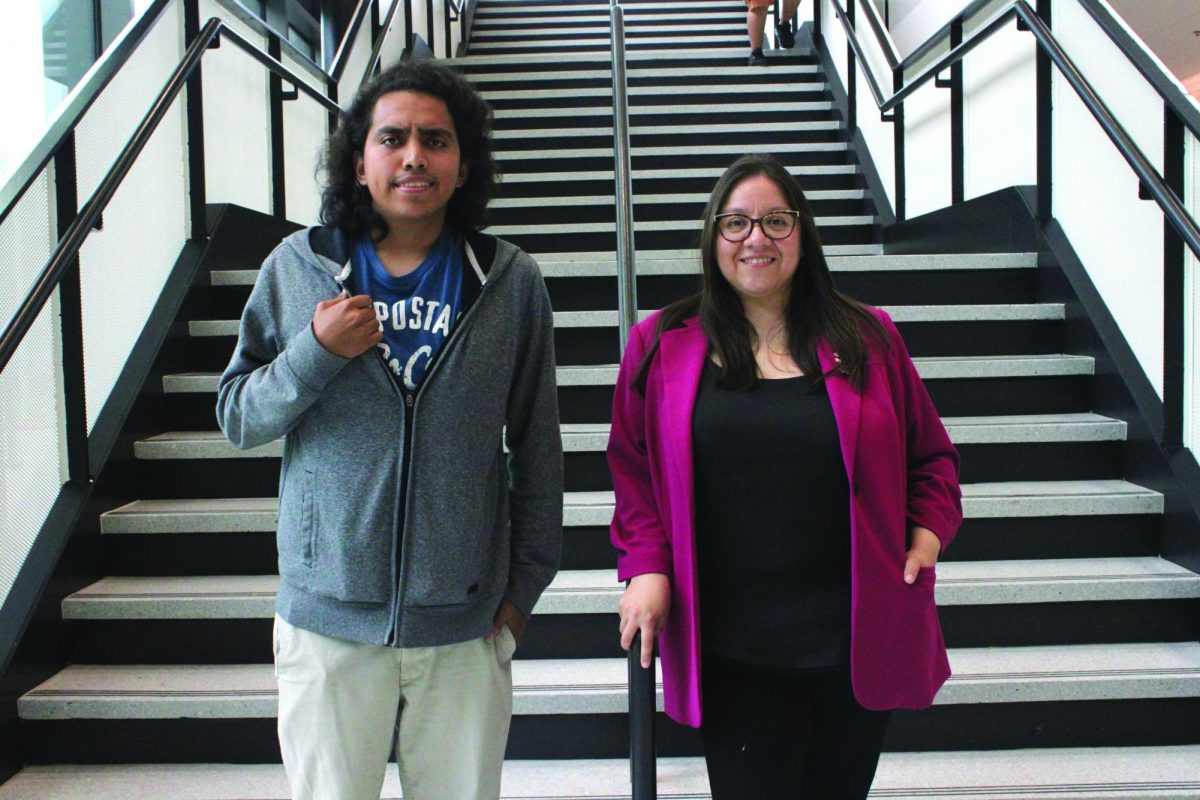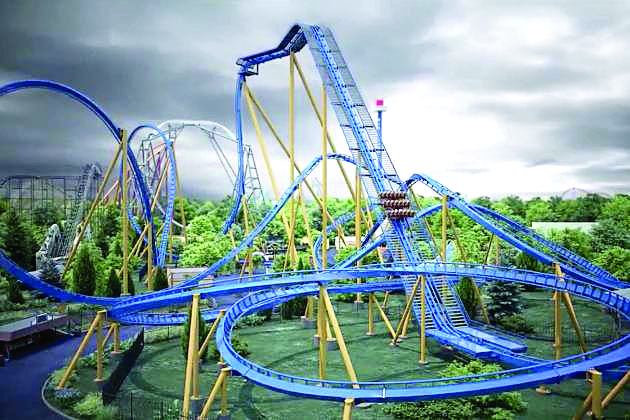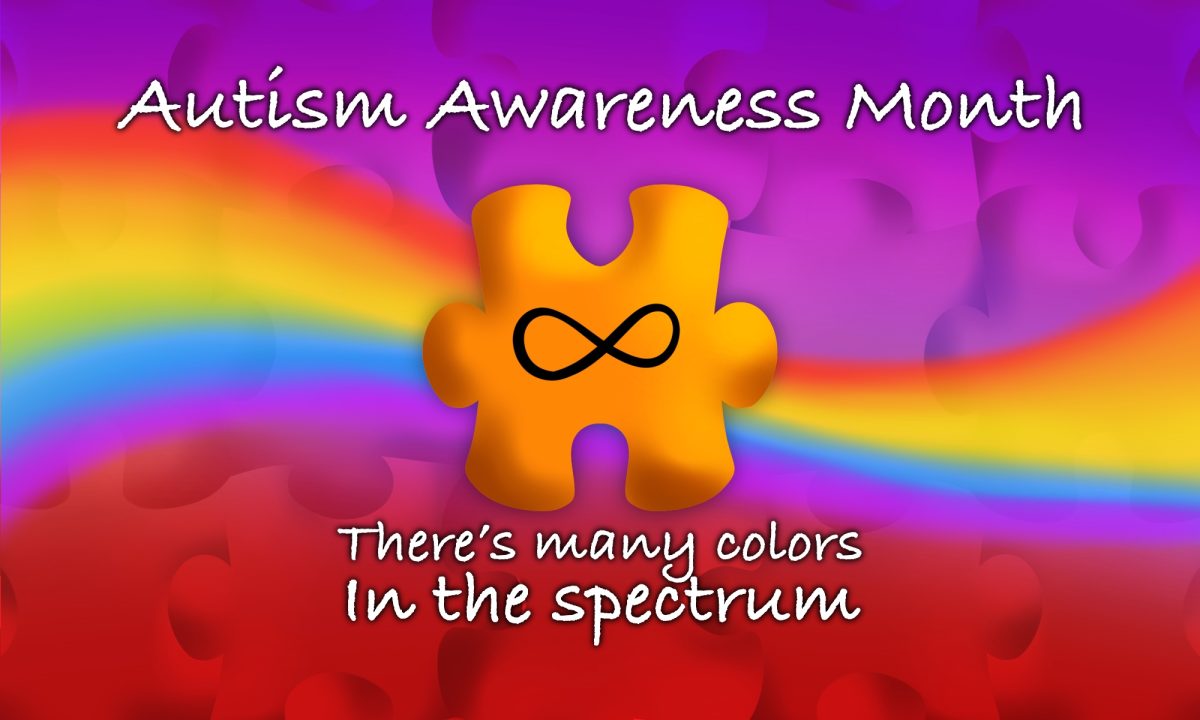
By Karina Dunn
Working with a student in his microscopy lab recently, Murry Gans expected to simply analyze a flower. To his surprise, he found a thrip at its center.
The winged, half-millimeter insect would have gone unnoticed without the aid of the college’s powerful microscope. Simple discoveries like these reinforce Gans’ appreciation for research and his job as Eastfield’s microscopy lab coordinator. The position allows him to help generate interest in the microscopes throughout the community, but particularly among students.
“We want undergraduates to actually have a real research experience,” he said.
Over the past year, Gans has used his passion for nature and science to show students the value of field work. By placing an emphasis on research, he hopes to instill a genuine appreciation for science.
Through a new independent research class taught by Gans, students gain the experience needed to work in the field, an option not typically available in community colleges.
Gans said his work is fulfilling and he admires the college’s emphasis on learning and self-improvement.
“Eastfield’s commitment to engaging students is phenomenal,” he said. “It’s unprecedented. Everyone here has a goal to better their lives.”
Gans’ students have learned about the importance of completing hands-on research projects in the lab and the impact it has on their future plans.
Microbiology major Jared Young said working with the microscopes can open doors to new opportunities. Earning a competency certificate for microscope gives students credibility in the field.
“You can take that knowledge anywhere,” he said.
Adam Woodall, who is working on an advanced manufacturing/mechatronics technology degree, said one of his favorite parts of the class is preparing for future research programs.
Though the opportunity to perform research is not defined in the curriculum, Gans and Executive Dean Gretchen Riehl of the Science, Physical Education and Athletics division intend to create an environment where students gain real research skills. They want students to perform the work of true scientists.
“Research is really one of the more powerful ways to engage students in science to get them to focus on it,” Riehl said. “The focus is on the skills.”
Gans finds the research process exciting, but not in the textbook sense. He said hands-on experience yields the best results. Not even Gans knows what will happen in the field, so students are forced to look at the bigger picture and break it down.
Put simply, Gans said field work is a process of discovery.
“In research, we kind of do it backwards — putting students in the field where they observe things,” he said.
While knowledge is gained in the classroom, Gans said field work helps students to be more self-motivated and self-empowered.
Biology major Sindy Sathyan said there is another payoff.
“Getting to potentially publish a paper, that’s what we do this for,” she said. “That’s what science is built on.”
For Gans, however, an appreciation for the unseen beauty of the world is at the heart of his job.
“I’m always fascinated with the different varieties that life comes in,” he said. “These insects are out competing, surviving. It is quite remarkable.”
With the belief that life exists not as a static system, Gans said he considers it a privilege to pay attention to the changes and variety offered by all species.
Looking back on the days when he first started to photograph insects and flowers, Gans said he still never goes anywhere without a miniature magnifying glass.
“I always have a magnifier because my world is tiny,” he said. “I stop [to observe specimens] all the time.”
